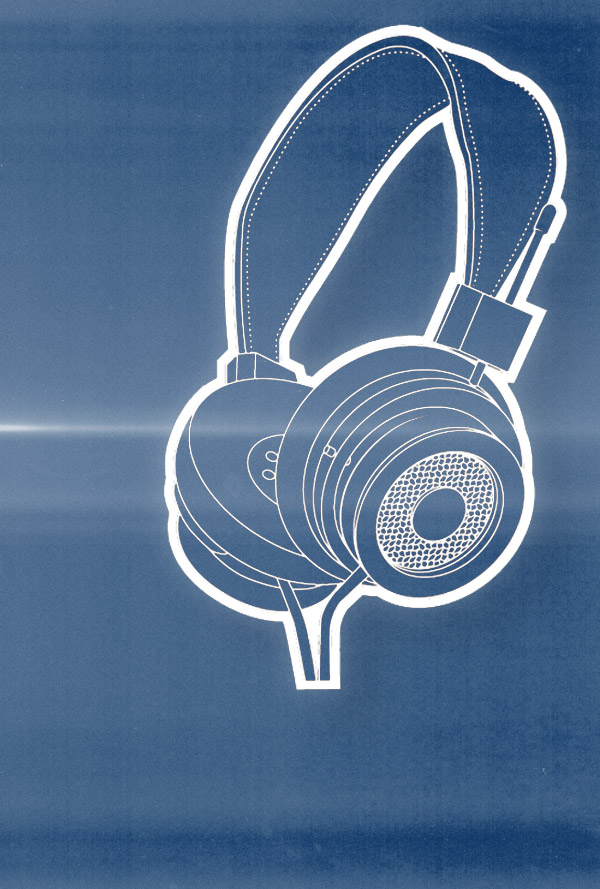
A good pair of headphones is an invaluable resource in the studio. Some people prefer to do all their monitoring in cans, some only when mixing and others have them as an option to continue working when in noise-sensitive environments. Regardless, if you don't have solid pair of headphones as part of your production set-up, they're well worth considering. Studio based headphones differ from those you may use for DJing or even just general day-to-day use. When monitoring and mixing in headphones, you need the sound reproduction to be as neutral as possible, how can you tell if your bass needs more low-end if the headphones you're using have a low-end boost built into them? For reasons like these, studio headphones often have characteristics like flat frequency reproduction, giving you as honest a picture of your soundstage as possible. This, can leave them sounding slightly less exciting than other models, designed for listening to music. But that's the point. When you're mixing and mastering you want to hear transparent audio, so you can make informed decisions about how to colour your production using EQ, compression and fx.
That being said, there's a lot of technical information to be digested, across a huge range of models and brands. So, we're going to discuss a few important elements that you might consider when choosing studio/monitor headphones and then break down some options in different price ranges.
Open Back vs Closed Back
This is one of the most common queries about headphones for studio use, what's the difference? Does it matter? It does, but it depends on how you intend to use them. Open backed headphones, intentionally allow some leaking of the sound out. This "bleed" prevents the buildup of certain frequencies, mostly bass, inside the cup and as such offers a more natural or flat sound. This is ideal when mixing or mastering, as the buildup of frequencies can colour the accuracy of your mix. On the other hand closed headphones give you much greater isolation, keeping the sound in, which is perfect when recording a microphone or situations where you need to keep external noise out. Closed back headphones generally function better as a "multi-use" headphone and are a great stating point as they can be a touch more versatile.
Frequency response
This describes the range of frequencies (pitches) a set of headphones can reproduce, between Point A (the lowest frequency) to Point B (the highest). Most headphones boast a frequency range of at least 20-20,000Hz. This is the full range of human hearing, meaning any sound that occurs outside of this is inaudible. So, the ability for a pair of headphones to reproduce sounds outside of this 20-20,000Hz range is mostly meaningless. Measuring the frequency response of headphones can be difficult too as everyone's ear canals are highly individual and will receive sound differently. So, unless the frequency response of a pair of headphones is stated as significantly less than the range mentioned above, don't put too much weight into this specification as a reflection of quality.
Impedance
Impedance is how much resistance a device poses to an electrical current being passed through it. It's measured in ohms and regarding headphones, refers to the amount of power you'll need to deliver decent listening volume. Most headphones will fall somewhere between 25 and 600ohms, the higher the number the more power needed. This is important because certain devices; smart-phones, cheap music players etc, may not be able to power higher impedance headphones appropriately. Generally, most cans up to 100ohms won't have any issues with smaller, less powerful devices. If you're using anything with an impedance of 100ohms or higher you might want to consider using a headphone amplifier, which will increase the power, volume and clarity of the sound. The benefit of higher impedance headphones, if powered correctly, is that they will deliver higher quality and accuracy. This is not to say that lower impedance headphones are bad, not at all!
You may also want to look at whether a particular headphone model has easily available and reasonably priced replacement parts. Quite often things like cables or ear pads are the first things to deteriorate and replacing these can extend the life of your favourite set of cans.
Having identified some of the more common headphone specifications, let's now look at a few different price brackets and some of our staff's picks for great options within those.
Below $150:
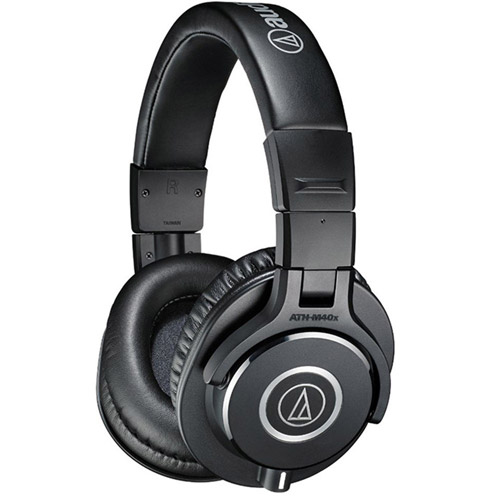
Audio Technica M40x
An awesome, closed back budget option. They couple a good, sturdy construction with swivelling cups, a detachable cable (includes 1.2m - 3.0m coiled cable and 3.0m straight cable) and feature a collapsible design for excellent portability. Their response is nice and flat, which makes them suitable for monitoring and mixing purxoses, but they'll also work well as a great day-to-day headphone as they're quite comfy.
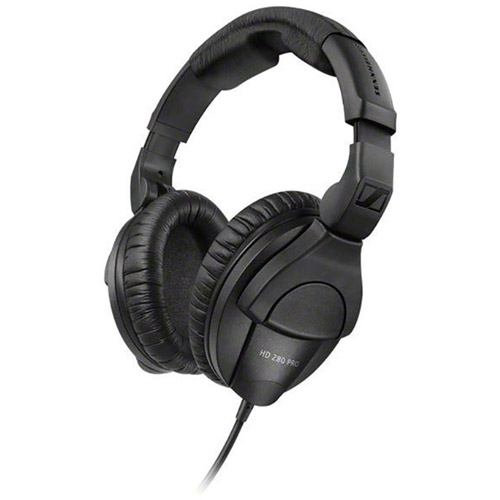
Sennheiser HD280 Pro
The HD280 is aimed at being a viable professional option, while maintaining a lower price point. They are closed back and feature very good noise isolation, so if you're looking for a pair of cans in this price range that'll be fantastic for recording, consider these. The HD280 are extremely popular in the recording world; they're simple, sound great and fold for convenience.
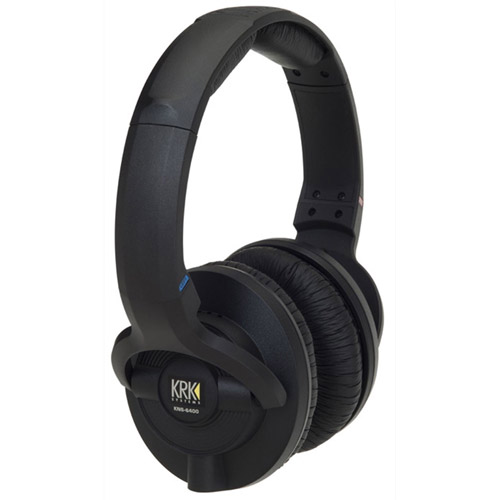
KRK KNS6400
You might not immediately think KRK when you consider headphones, but these are definitely under-rated and worth a shout. They're super comfortable and use great quality acoustic cellular foam to aid in isolation (they're closed back). The frequency response is neutral (so good for mixing), and they offer pretty accurate sound for headphones in this price bracket. They also feature a detachable cable.
$150 - $250:
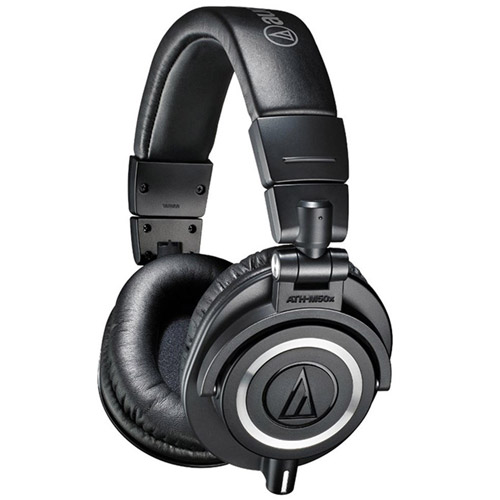
Audio Technica M50x
Probably the most popular studio headphones, regardless of price. They differ from ATM40x in a few different ways. Like the 40x they're closed back, but the 50x improves on the build quality and components. They come with three cable options, rather than two and overall, they're slightly heavier. The ATM headphones have a somewhat V shaped frequency response, meaning they emphasise the low and high ends a little more. Here the M50x's offer a little more upfront bass than the 40x, whose response is slightly flatter. It's hard to go past the M50x, they're insanely popular for a reason. They're comfortable, durable, well-priced and offer great sound, not only for mixing and recording but also as listening headphones.
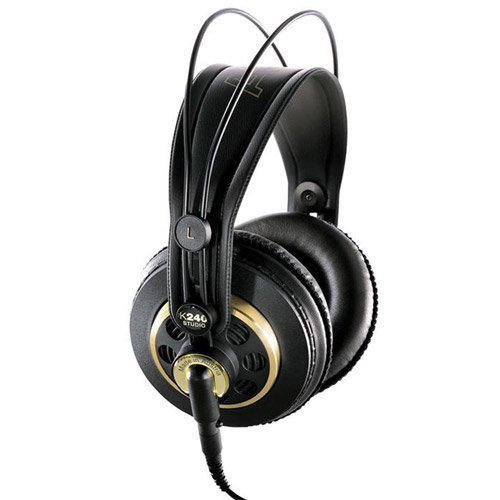
AKG K240
The first non-closed back headphones on this list, the AKG K240's have a semi-open design, which makes them ideal for mixing and mastering purposes, but also pretty decent for recording as well. They're also very comfortable, with a self-adjusting headband and big over-ear cushions, great for long sessions. The sound reproduction is really great for this price bracket and overall, they offer a fantastic option for someone wanting a set of cans versatile enough to do both mixing and recording. Unfortunately, due to their design, these aren’t great as a portable headphone option. Definitely one for studio and home use.
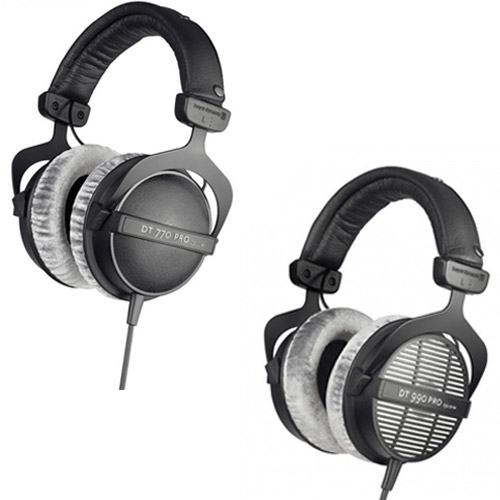
Beyerdynamic DT 770 PRO/DT 990 PRO
We've grouped these two models together as they offer most of the same specifications and build construction but differ in their ear cup design and hence application and sound reproduction. The 770 is a closed back headphone, while the 990 is open backed. Obviously the 770 will offer greater sound isolation and therefore is better for use when recording or when using on the go. They also offer more in terms of low-end output and oomph. The 990 is much sweeter in the mids and highs, with less low-end and with an open back cup design has more of a neutral sound, ideal for mixing. If you're looking for an all-round balanced option, you might consider the 770PRO which is also available with different impedance settings (32, 80 & 250ohms). While the 990PRO will offer more accurate, even sound reproduction, better suited to studio-based use. For many customers (and staff) the difference here really comes down to personal preference.
$250 and above
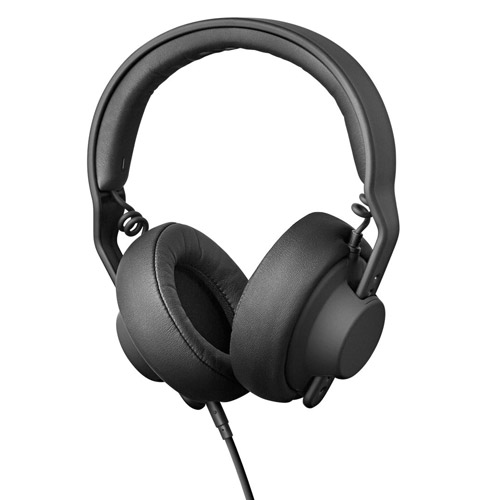
AIAIAIA TMA-2 Studio
Aside from their awesome design, the best thing about the AIAIAI TMA-2's is that they're modular! If you decide you want different cups or drivers, you can buy another speaker unit or different cables, ear cushions and headbands. All to suit your taste and there's no complex fitting procedures either. One of the coolest offerings associated with these cans is that AIAIAI make a Bluetooth headband, which can be purchased separately, meaning rather than buying a whole new set of headphones you just interchange the headband when you want a wireless option. Moreover, they sound great and are very comfortable.
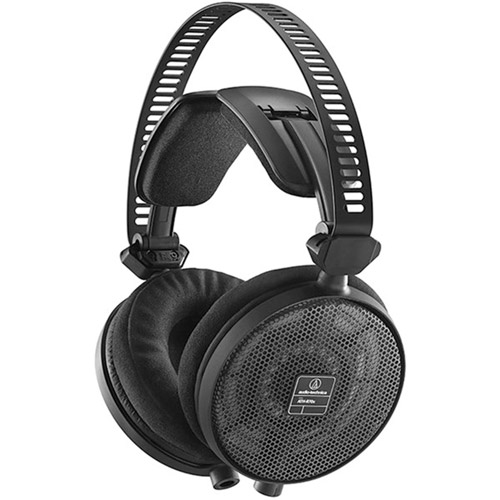
Audio Technica ATH-R70x Pro
These might be some of the most comfortable headphones we've ever worn. Perfect for long sessions of listening in the studio, not only because of the comfort but their transparency, which means very little ear fatigue. When you start getting up in to the higher price points, headphone models can become more specialised in their design and the R70x, with their open back construction are made for the studio. The sound reproduction is flat, great for mixing and they're also very light-weight, again perfect for those long studio sessions. We feel that the R70x competes with headphones twice their price! That being said, with an impedance of 470ohms these won’t match up well with smaller devices. You’re probably going to want to use them with a headphone amp or audio interface, so they can be properly powered and offer the highest quality output.
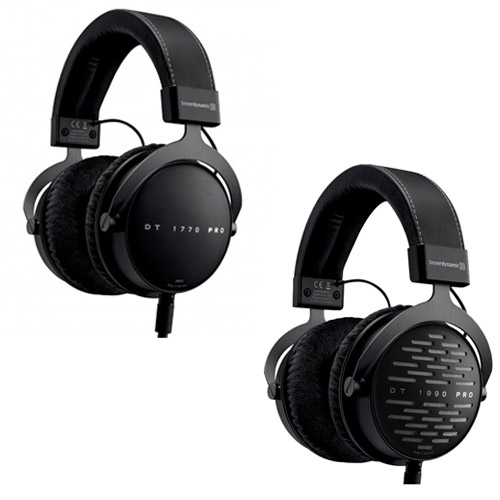
Beyerdynamic DT 1770 PRO/DT 1990 PRO
As a premium model, these sit at the higher end of the price scale, but accuracy of sound is what you'll get! Like with the DT770 & DT990 mentioned above, these are two similar units, with the difference being closed (DT 1770) vs. open (DT 1990). They both offer incredible response across the frequency spectrum, are hand-made in Germany, very comfortable and come with 2 sets of ear pads and 3 cables options. The DT 1770, give great isolation and, despite being closed, work great for mixing. The 1990 will open up your mix in a way a closed headphone cannot, though. It really comes down to usage and how important or necessary isolation is to you. Either way you'll be getting an epic pair of headphones. It's also worth mentioning here that with an impedance of 250ohms, using these with an appropriate amount of power will help you the most out of them.